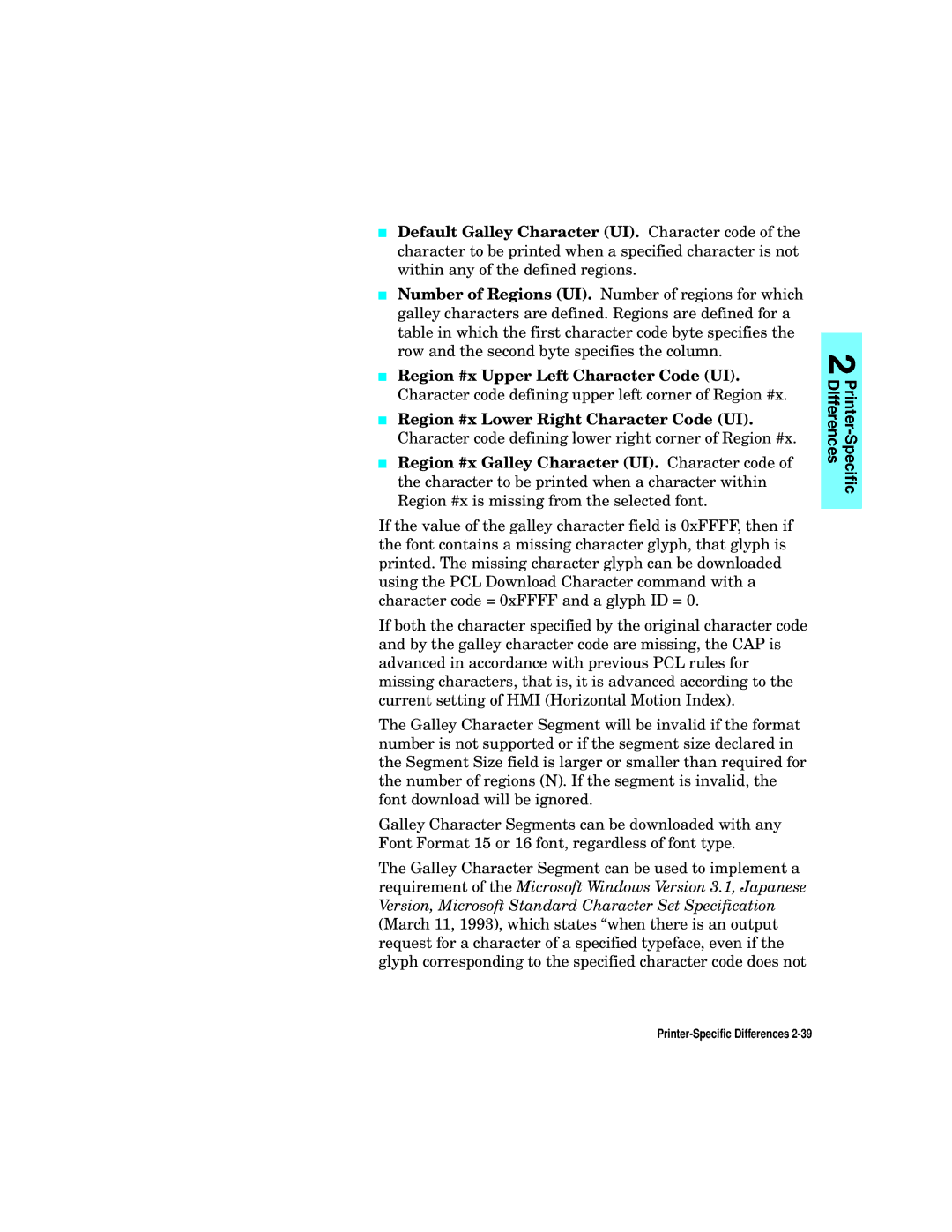
Default Galley Character (UI). Character code of the character to be printed when a specified character is not within any of the defined regions.
Number of Regions (UI). Number of regions for which galley characters are defined. Regions are defined for a table in which the first character code byte specifies the row and the second byte specifies the column.
Region #x Upper Left Character Code (UI). Character code defining upper left corner of Region #x.
Region #x Lower Right Character Code (UI). Character code defining lower right corner of Region #x.
Region #x Galley Character (UI). Character code of the character to be printed when a character within Region #x is missing from the selected font.
If the value of the galley character field is 0xFFFF, then if the font contains a missing character glyph, that glyph is printed. The missing character glyph can be downloaded using the PCL Download Character command with a character code = 0xFFFF and a glyph ID = 0.
If both the character specified by the original character code and by the galley character code are missing, the CAP is advanced in accordance with previous PCL rules for missing characters, that is, it is advanced according to the current setting of HMI (Horizontal Motion Index).
The Galley Character Segment will be invalid if the format number is not supported or if the segment size declared in the Segment Size field is larger or smaller than required for the number of regions (N). If the segment is invalid, the font download will be ignored.
Galley Character Segments can be downloaded with any Font Format 15 or 16 font, regardless of font type.
The Galley Character Segment can be used to implement a requirement of the Microsoft Windows Version 3.1, Japanese Version, Microsoft Standard Character Set Specification (March 11, 1993), which states “when there is an output request for a character of a specified typeface, even if the glyph corresponding to the specified character code does not
